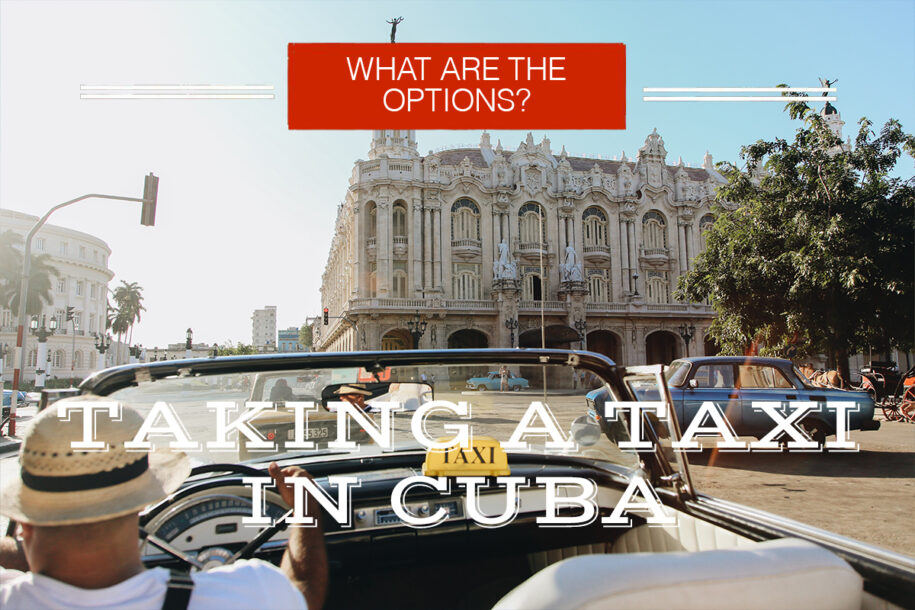Catching a taxi in Cuba is an experience as unique as the country itself. To successfully get from one place to another by taxi in Cuba means you need to know which type of taxi is the best one for you to take. It also requires having the right attitude to ensure that your Cuba taxi ride is an awesome,(and not too expensive), experience.
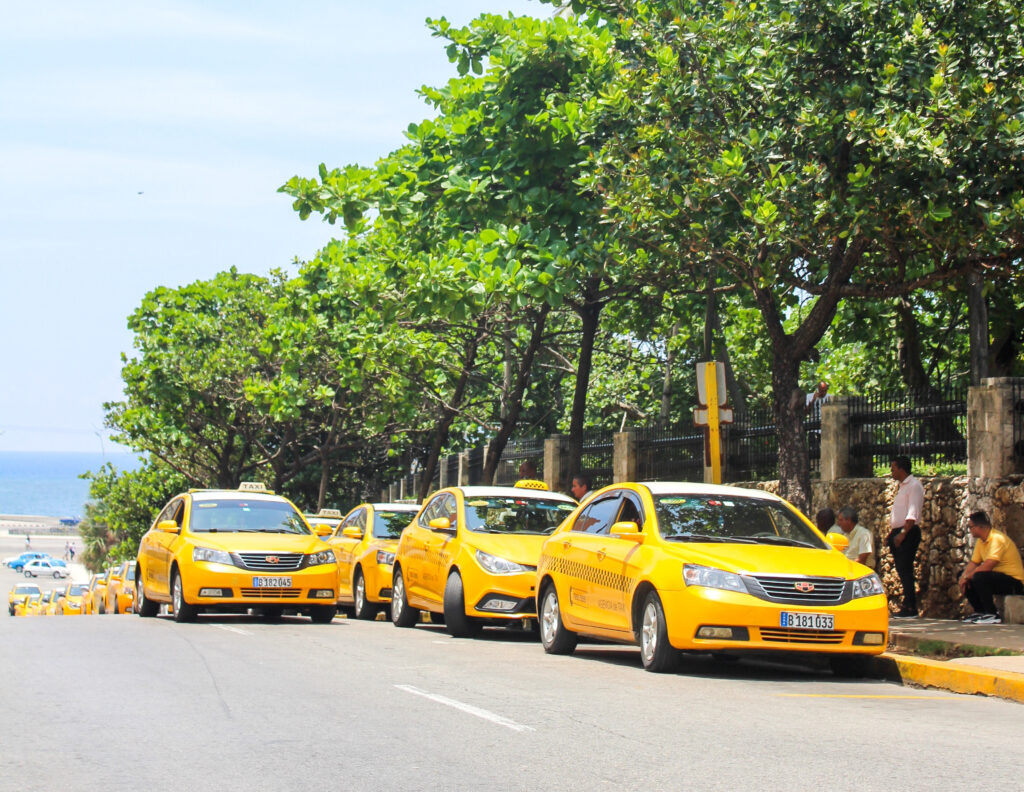
The Official Taxi for Visitors
Despite Cuba’s reputation for having exclusively old American cars from the 1950s, there are a few exceptions. Sometimes Japanese and European cars are used as official licensed taxis. and these offer mod cons such as air conditioning, for which you will probably be grateful. These Turistaxis (tourist taxis) feature meters, although the driver will often try to negotiate a price before the journey and will not even turn the meter on. It’s wise to know roughly how far you need to travel so that you know the price is fair. These taxis are clearly marked – it’s not difficult to spot them. Whatever one it is it will have a “TAXI” sign on the roof or dashboard of the car.
Unofficial Taxis
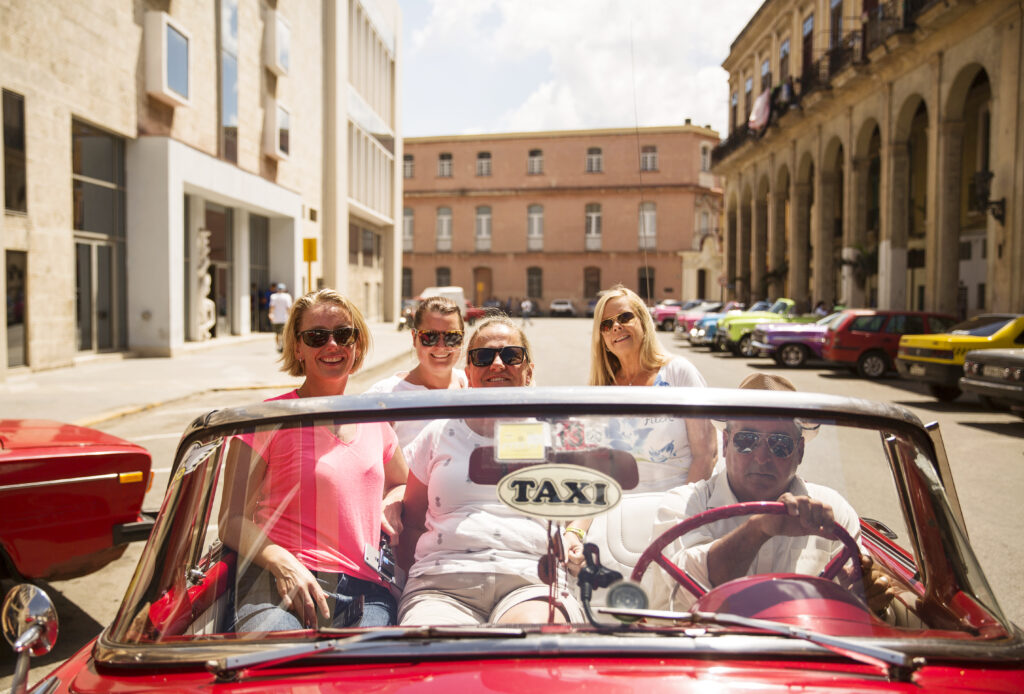
Private taxis are a type of Cuba taxi that have become popular due to the Cuban government’s increased flirtation with private enterprise. While turistaxis are operated by the state, private taxis (taxis particulares) are operated by the few private citizens that own a vehicle. They are licensed, so don’t worry – it’s not an illegal Cuba taxi. These vehicles are more likely to be a classic old American car, which is a bonus for visitors.
Despite the fact taxi particulares are a different type of taxi than a Turistaxi, the price will not necessarily be lower. The driver is extremely unlikely to turn on the meter, so again – be sure to know roughly how long your journey should take. If the driver quotes a price that you feel is too high, feel free to negotiate, and even threaten to get out and find another car… it’s all part of the process. These taxis are also clearly marked, and you can often only tell the difference between a Turistaxi and a taxi particular by the type of car that is being used.
Be aware that only taxis with a ‘P’ as the first digit of the number plate are private. Those with a ‘B’ are government owned taxis. Also by catching a taxi with a “P” on the plate you can be sure you are directly supporting a local Cuban.
Coconut Taxis: Uniquely Cuban
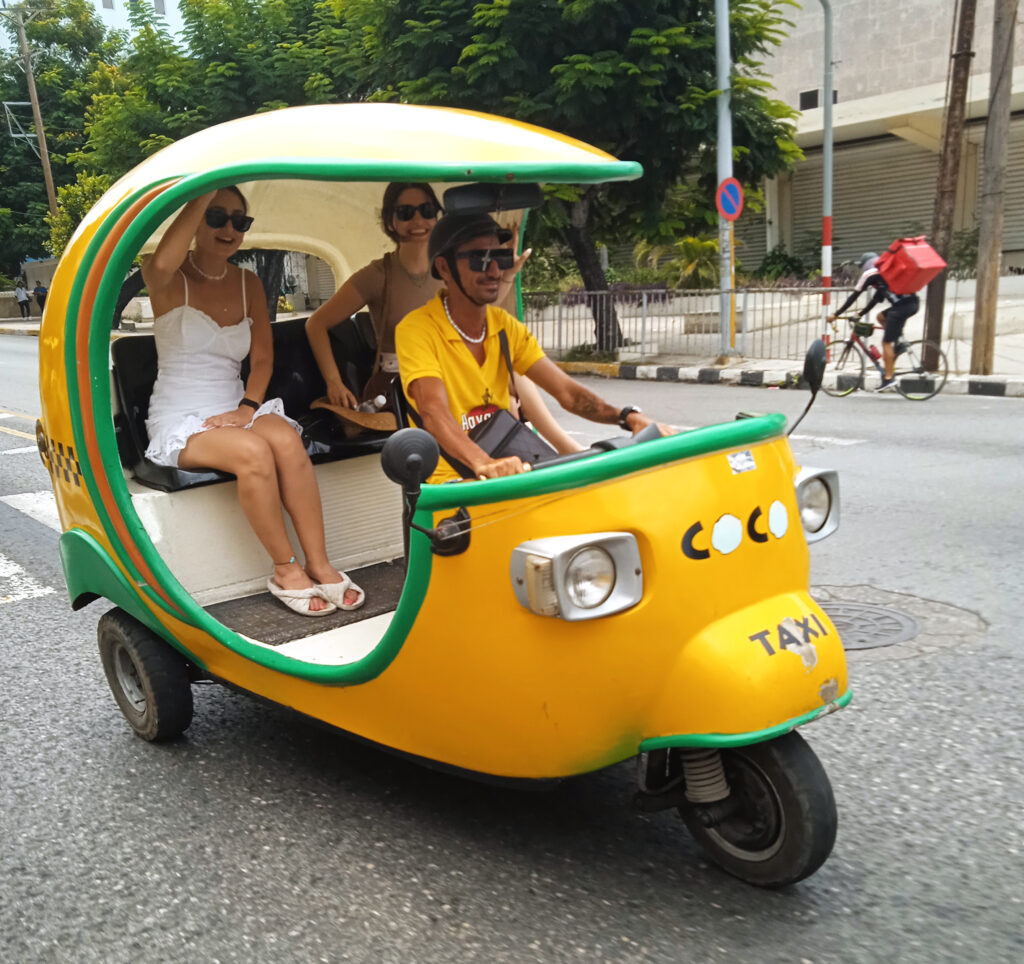
The coconut taxi or “coco taxi” was introduced to Cuba in 1990 and is basically fiberglass shelled rickshaw with a modified motorcycle as the engine. It’s a fun way to zip around in Havana and also further afield in Varadero and Trinidad. In Havana they mainly run along El Malecon between Old Havana to Vedado and the surrounding streets. Cost wise they are cheaper than a normal private taxi but more expensive than a taxi colectivo.
A Taxi Colectivo
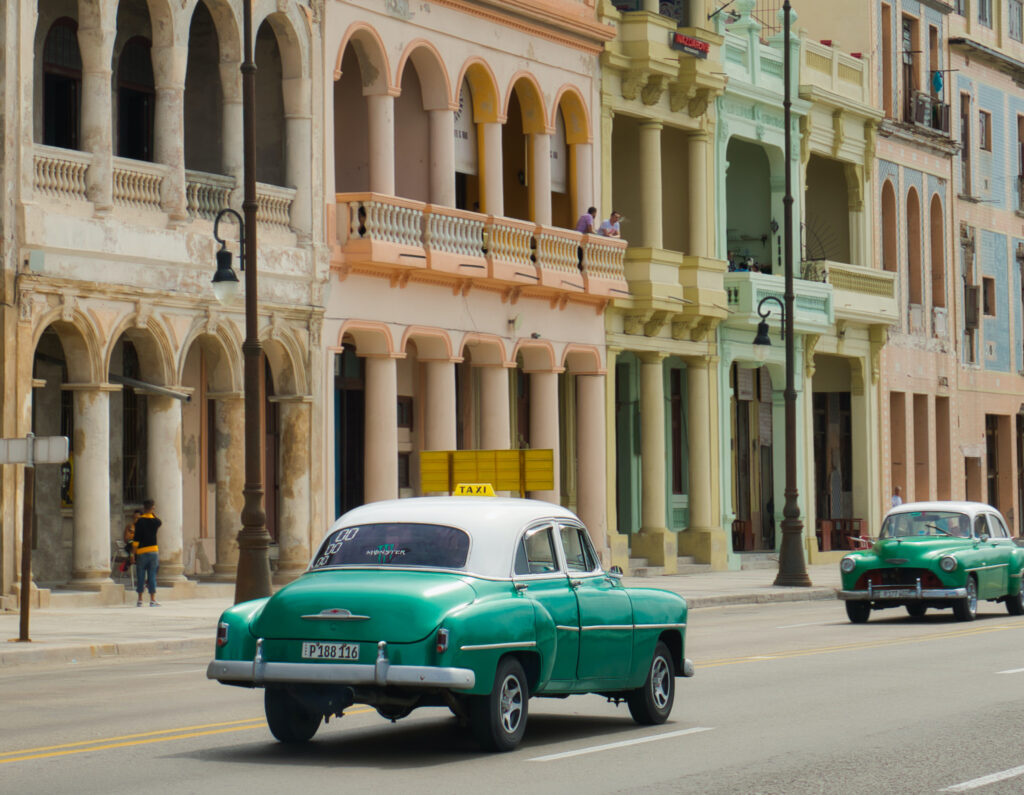
In many cities around the world, if you see a group of people crammed into a taxi you’ll assume that it’s a bunch of friends on their way to somewhere. This is not always the case when it comes to a Cuba taxi. Larger towns and cities feature taxis colectivos, which are communal taxis. They drive around pre-determined routes, and there are no official stops – the driver will let you out wherever it’s safe to do so. Of course, this makes it difficult to know where to catch the darn thing.
Ask at your accommodation, and they should be able to tell you where to find one. You can only use taxis colectivos if you happen to have some Cuban pesos. It’s an amazingly cheap way to get across town. You might find yourself getting from one side of Havana to the other for less than USD $1. This really is the way that the locals travel.
Bicitaxis For Short Trips
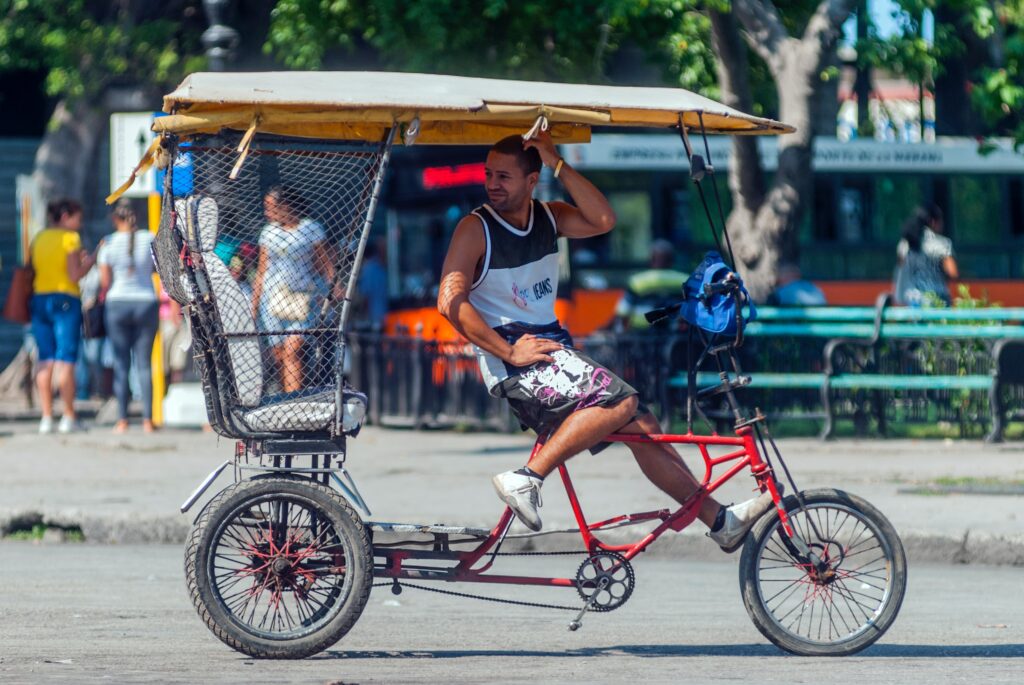
Bicitaxis are a common site in areas frequented by lots of visitors like Old Havana. Many visitors use these as a kind of joy ride, but you can also use them to get back to your accommodation after a long day of walking around. The price is negotiable, and this type of Cuba taxi doesn’t have a meter. You should be sure to agree on a price before you start your journey. Be prepared to initially be quoted a higher fee which you can choose to pay or try to strike a deal. This is where speaking Spanish will come in very handy.
